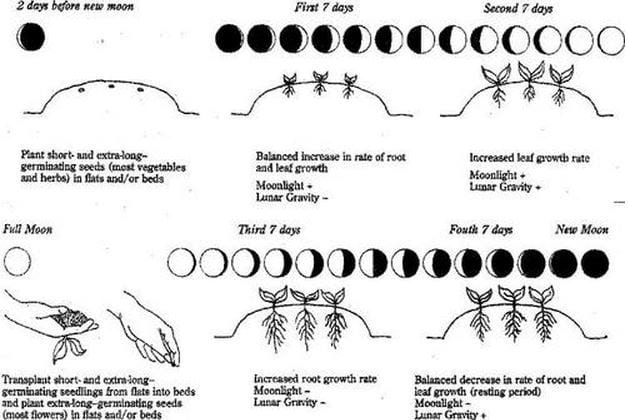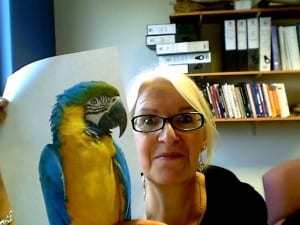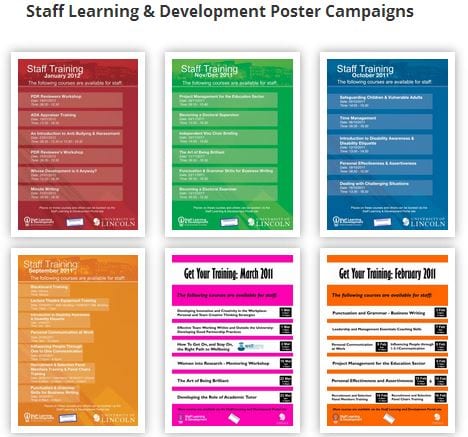This research should not be about ‘teaching educationalists to use technology’ but being critical about the role of the university as a site of knowledge production and negotiation. HE is accommodating new technologies but of necessity the process needs to be critiqued. (supervisor feedback earlier this year)
After a summer of discontent with theory, I’ve decided where my research is located; it will be pedagogically as much as critically informed.
The relationship between the university and learning technology is open to critique but my research remains within the discursive practices of ‘teaching educationalists to use technology’. Digital-first policies are increasing pressure to shift to blended and distance learning. There is an urgent need to find ways to adapt traditional lecture and seminar formats to online delivery. Not the passive transmission model of powerpoint and word repositories, but the building of genuinely experiential learning based on shared practice and collaborative group work. Time to argue about the politics of alternative technologies is running out. We need to make better pedagogical use of what we already have; to reinvent design and delivery which supports critical thinking and reflective practice while acknowledging internet access is changing what it means to know and to learn in a digital age (CIBER, Wolf, Saljo) Ecology as well as pedagogy is required.
I get nervous about calls for a radically different approach to education. While agreeing the need for curriculum resilience within fluid knowledge landscapes, I have less confidence in alternatives such as Edupunk’s contested DIY model as portrayed by Kamenetz Pathways and guidance might be more effective than freedom in an unfettered internet. Rather than move away from the university in Edufactory style, my research will investigate how to do different and better with what is already in place. Revolution is not the only response.
TELEDA was designed to be progressive. Resources include signposts towards critical pedagogy and social inclusion, learning activities are collaborative and communicative and technology is presented as potentially divisive. Participants are continually encouraged to consider inclusion. My approach is embedded in existing critiques of technology for learning. These include Feenberg’s call to analyse technologies as historically situated (1999) and restructuring the dynamics of technological design and development as social and political processes (2005) and Selwyn’s theorising of educational technology as a profoundly social, cultural and political concern (2010) Time again this summer I’ve returned to Foucault and distributed flows of power through discursive practice. I’ve discovered the places where Giroux has applied postmodern ideas to teaching and learning and where education represents the practice of freedom and a pedagogy of hope (Freire, hooks, Giroux). The work of Warshcauer, Seale, Selwyn and Facer, van Dijk and Seyeart on critical approaches to digital divides and exclusions continue to inspire me.
My PAR will interrogate TELEDA, for better or worse, It will focus on how virtual engagement for staff and students need not represent the automation of teaching but offer support for the higher level thought processes integral to a university education. Here I find Friesen’s critical approach to the myths of elearning and the work of Reeves and Harrington on research into learning design to be useful. The growing recognition of space between the rhetoric and the practice of elearning (Conole, Oliver, Feenberg, Reeves, Harrington etc etc) is supporting a rethinking of the translation of subject disciplines from the face to face to virtual design and delivery. Reeves et al suggest six possible theoretical bases for this research. I have chosen this one
‘Researchers with postmodern goals are focused on examining the assumptions underlying contemporary educational programmes and practices with the ultimate goal of revealing hidden agendas and empowering disenfranchised minorities. Although increasingly evident among researchers with multicultural, gender or political interested, research in the postmodern tradition is rare within the field of educational technology.’ (Reeves et al 2010: 60)
So here it is. For over 20 years I’ve worked with technology for education. I was there at the beginning – from pre internet to dial up, MOOs and MUDs to Second Life, Twitter, Flickr and Facebook. I’ve lived and breathed in the spaces between the rhetoric and reality of virtual learning. Those spaces are now being made public and while the critique is essential, so is the need to find new ways to move forward. I believe this research will combine all the essential elements. I’ve gathered the work of critical theorists who speak of social responsibility and inclusion and am ready to construct my PAR framework for establishing a foundation for truly inclusive virtual teaching and learning, one which may appear more pedagogical than political but which nevertheless enables the rethinking required to build progressive online higher education appropriate for a digital age.
see PhD page for full references













